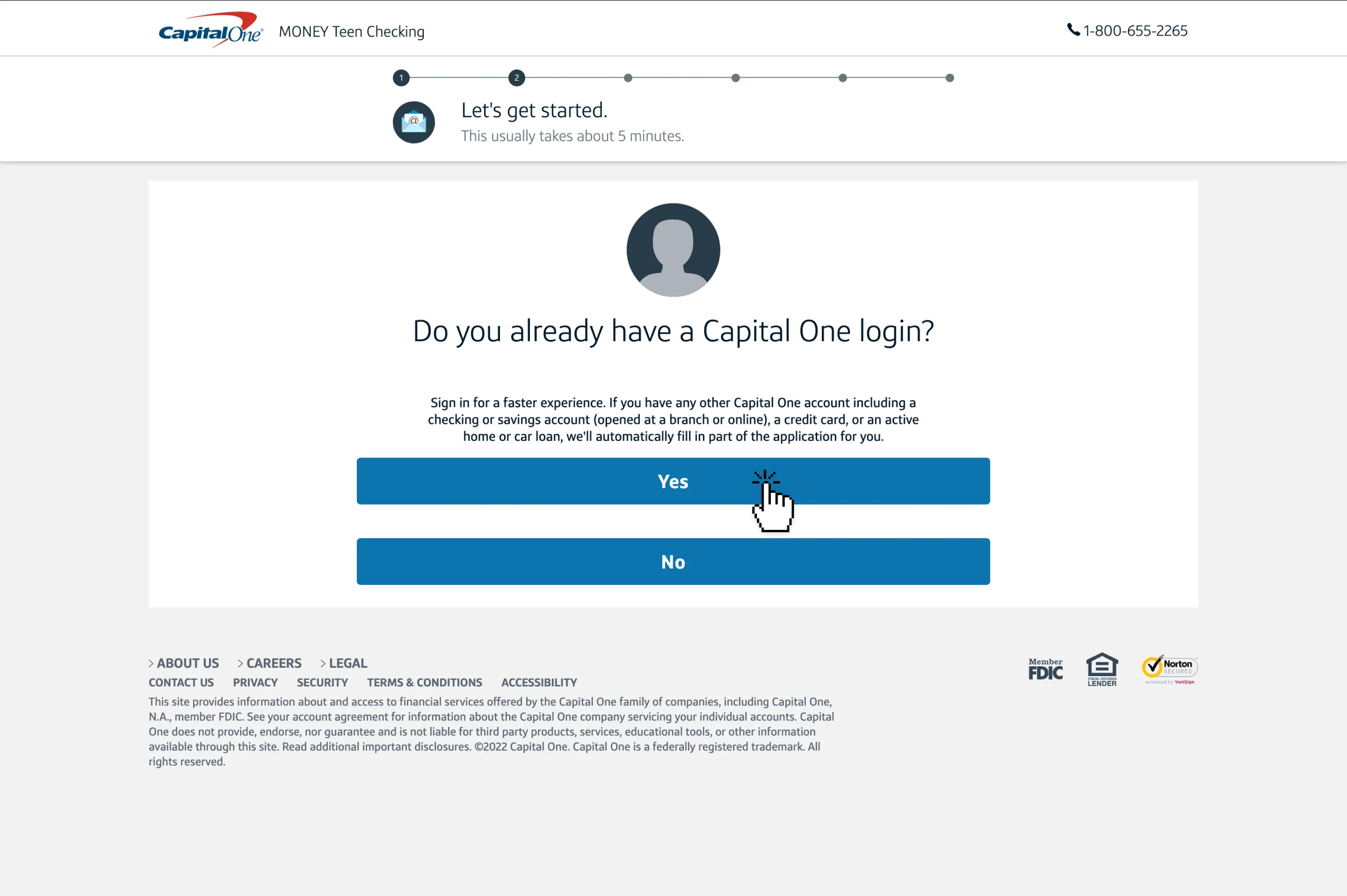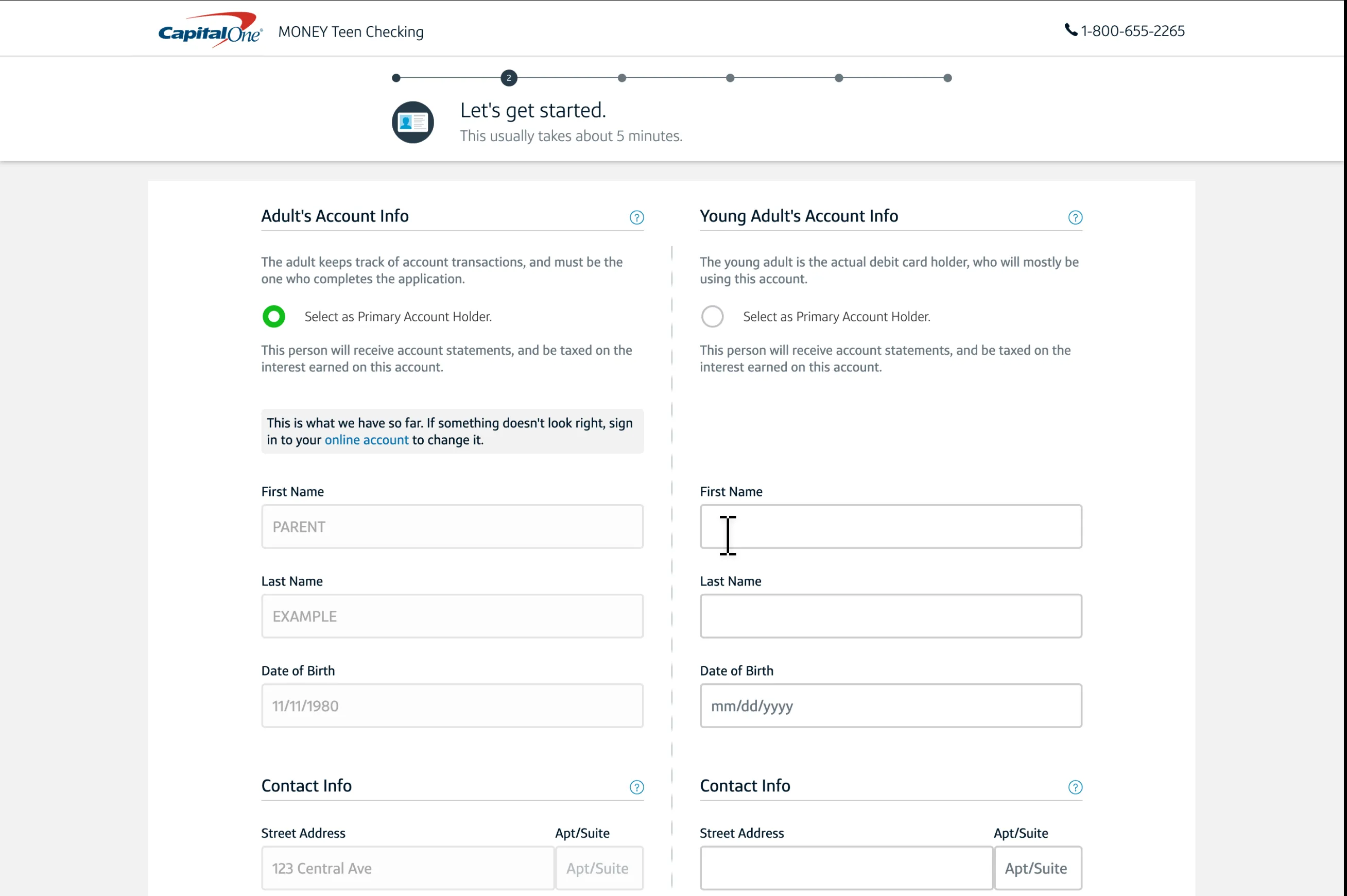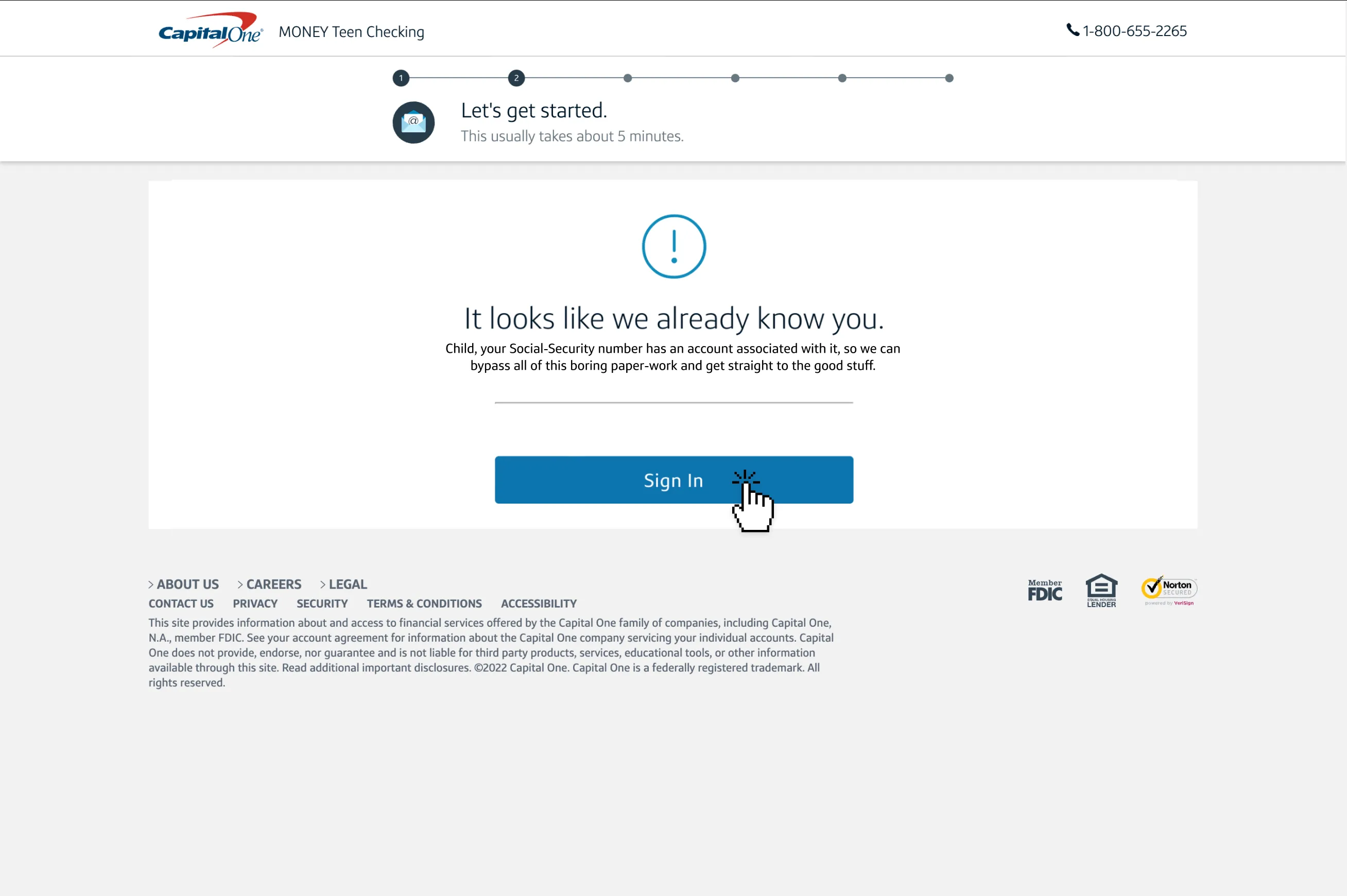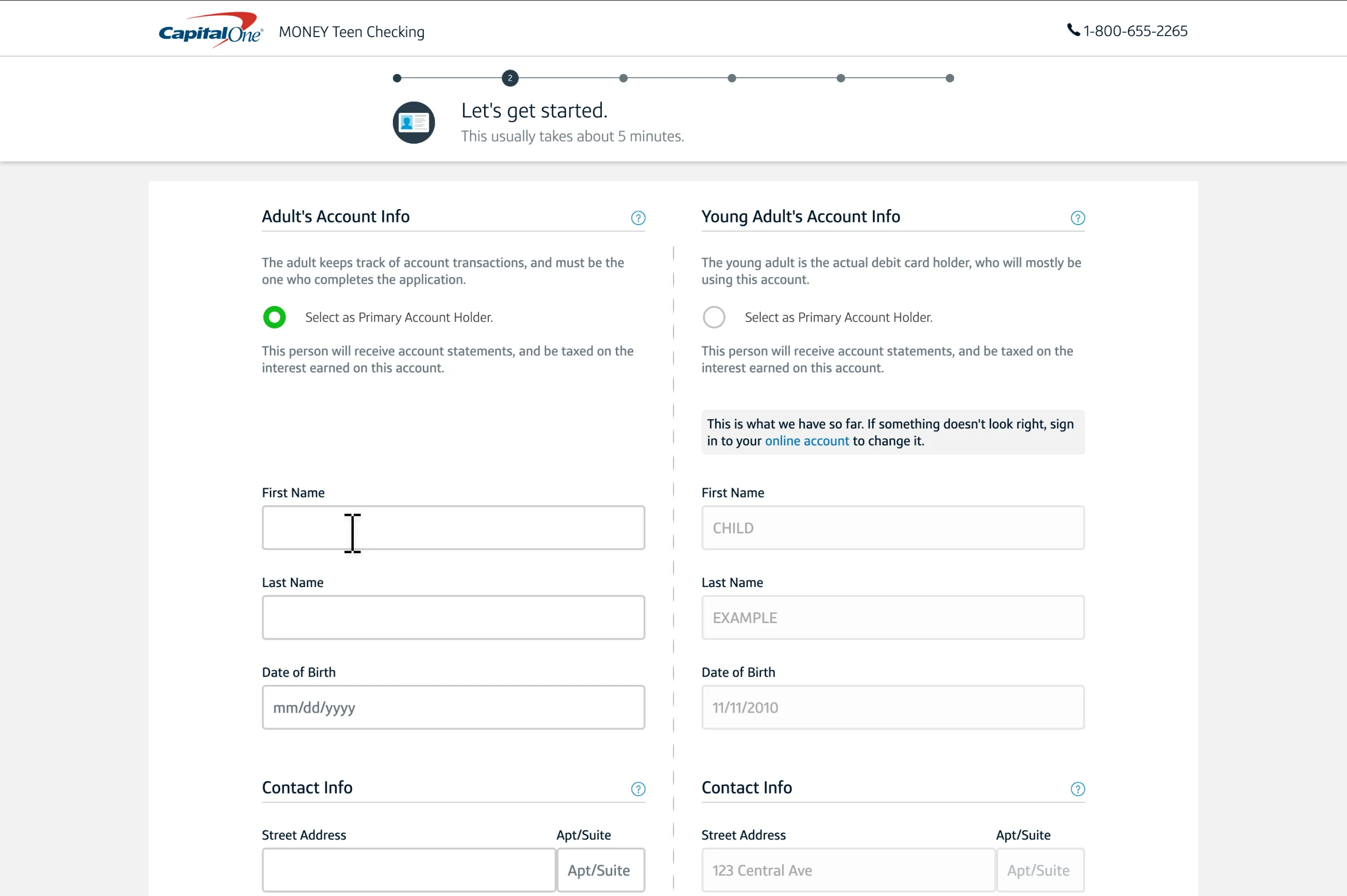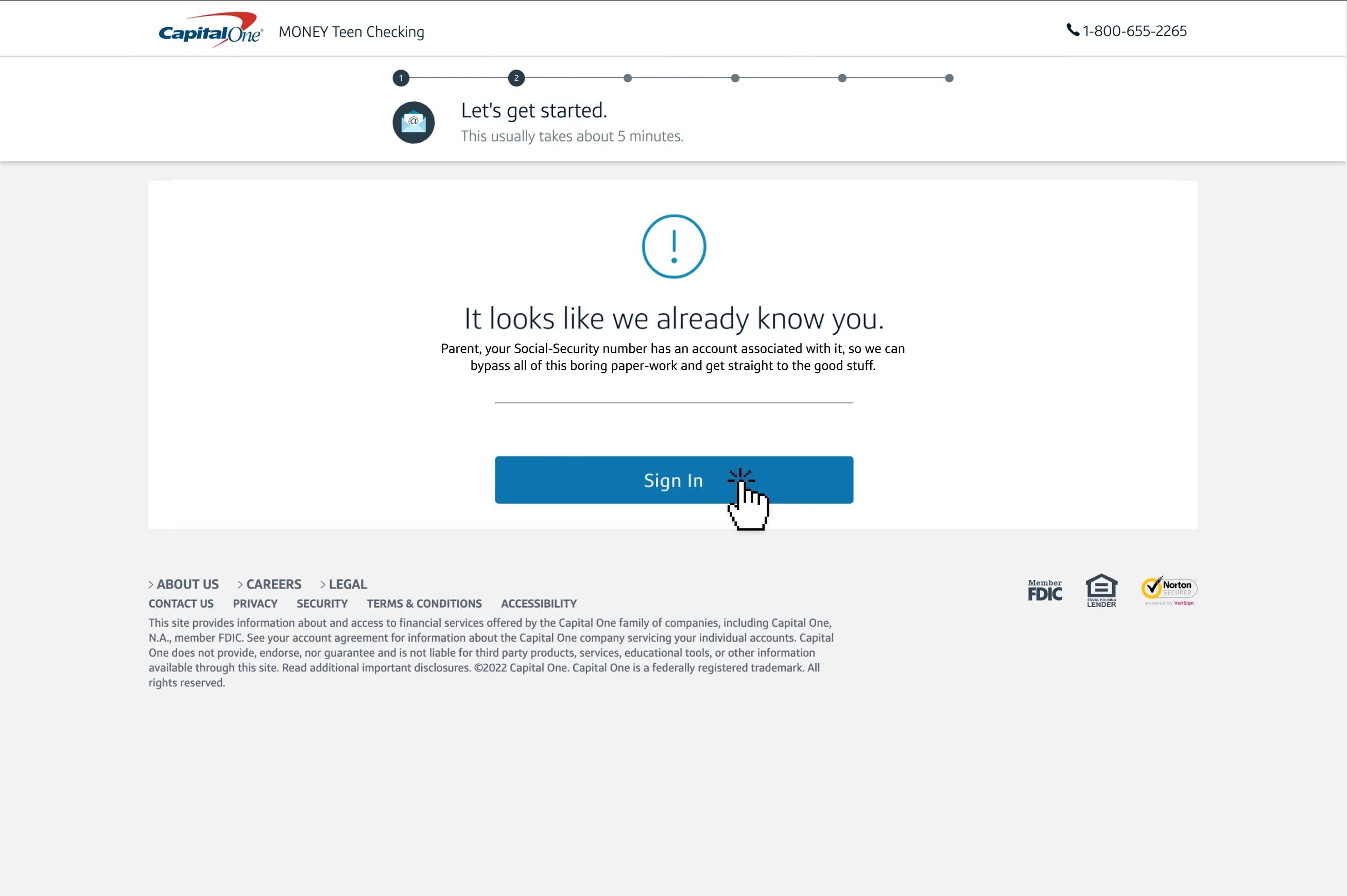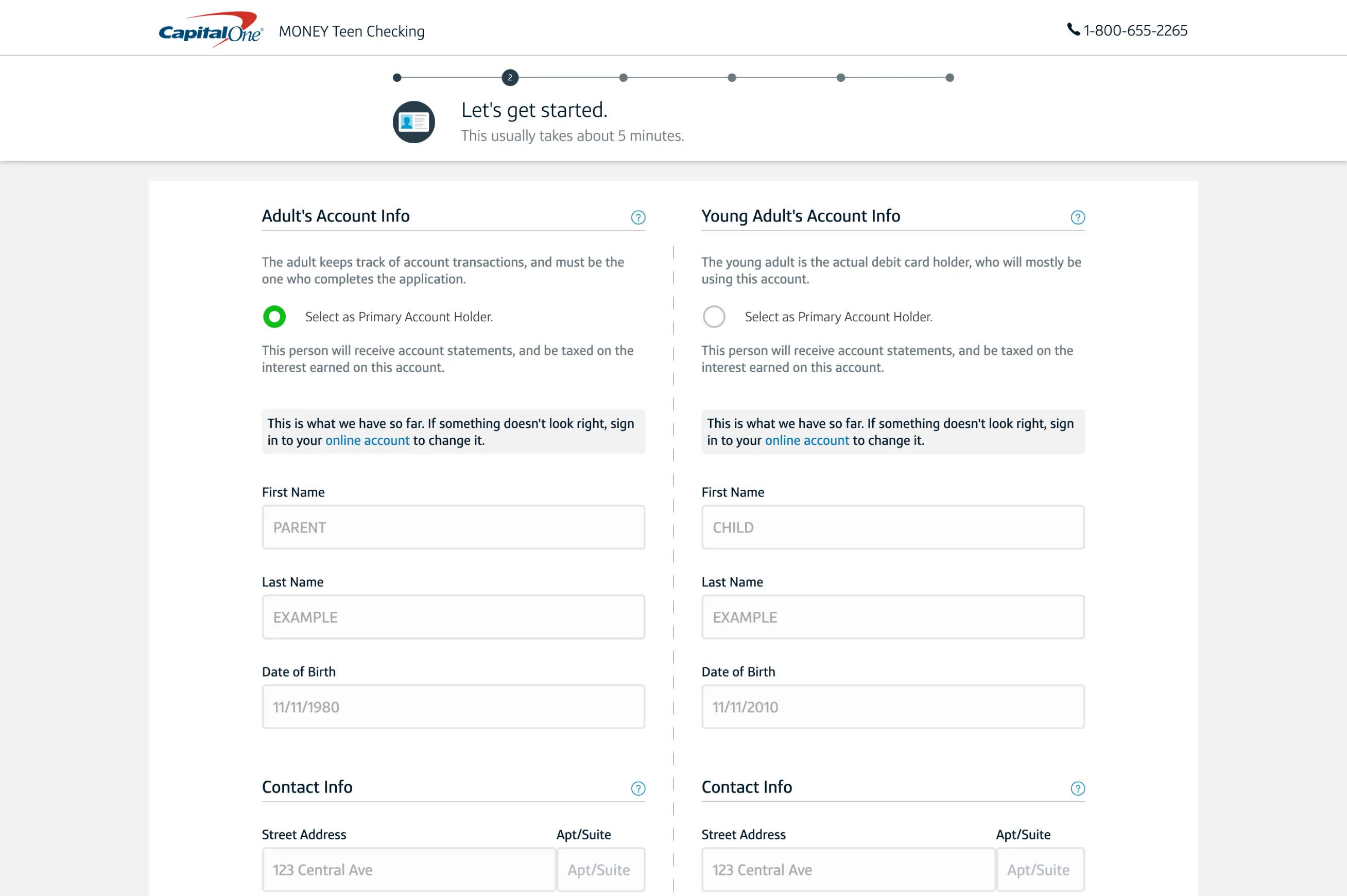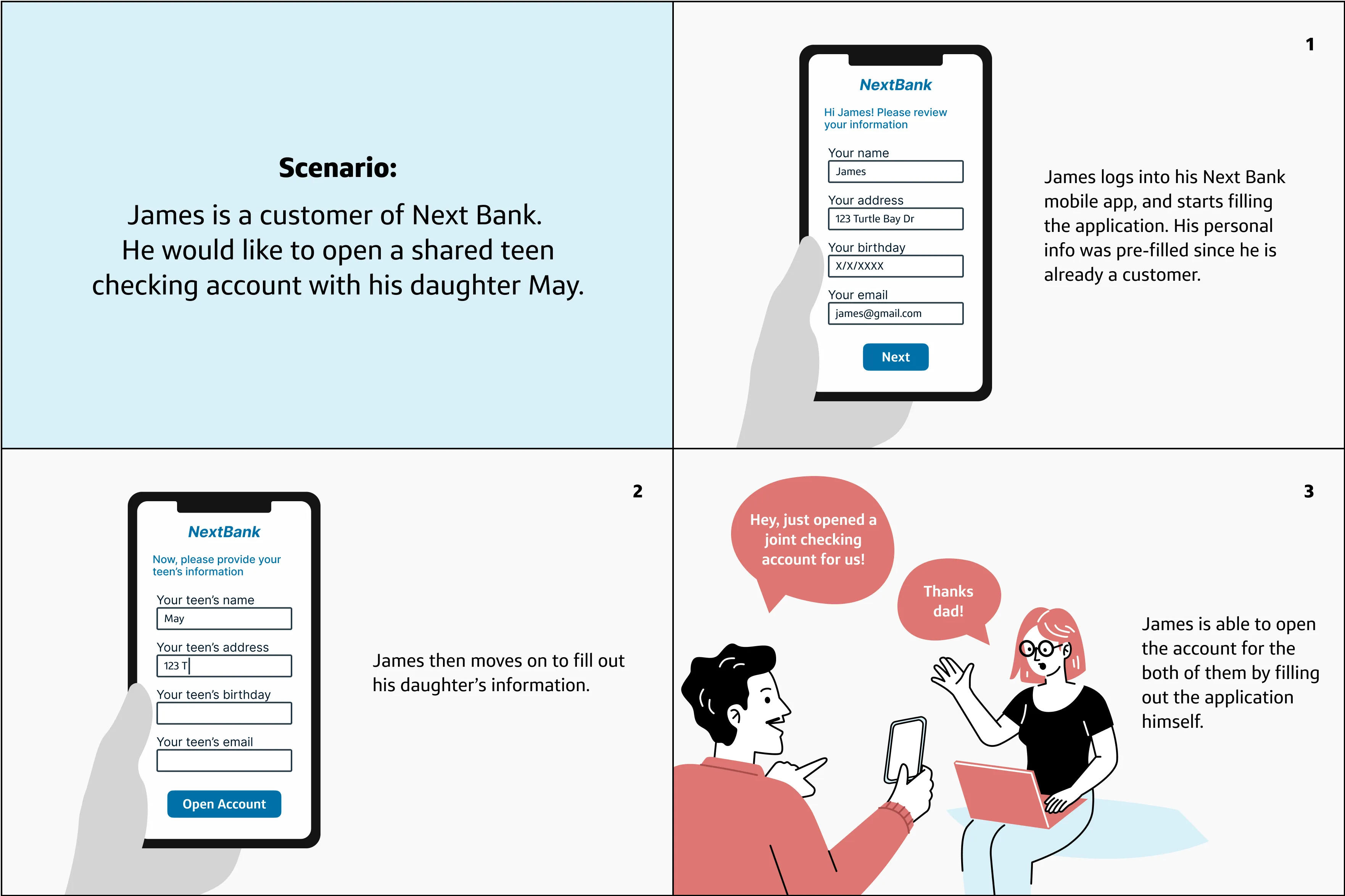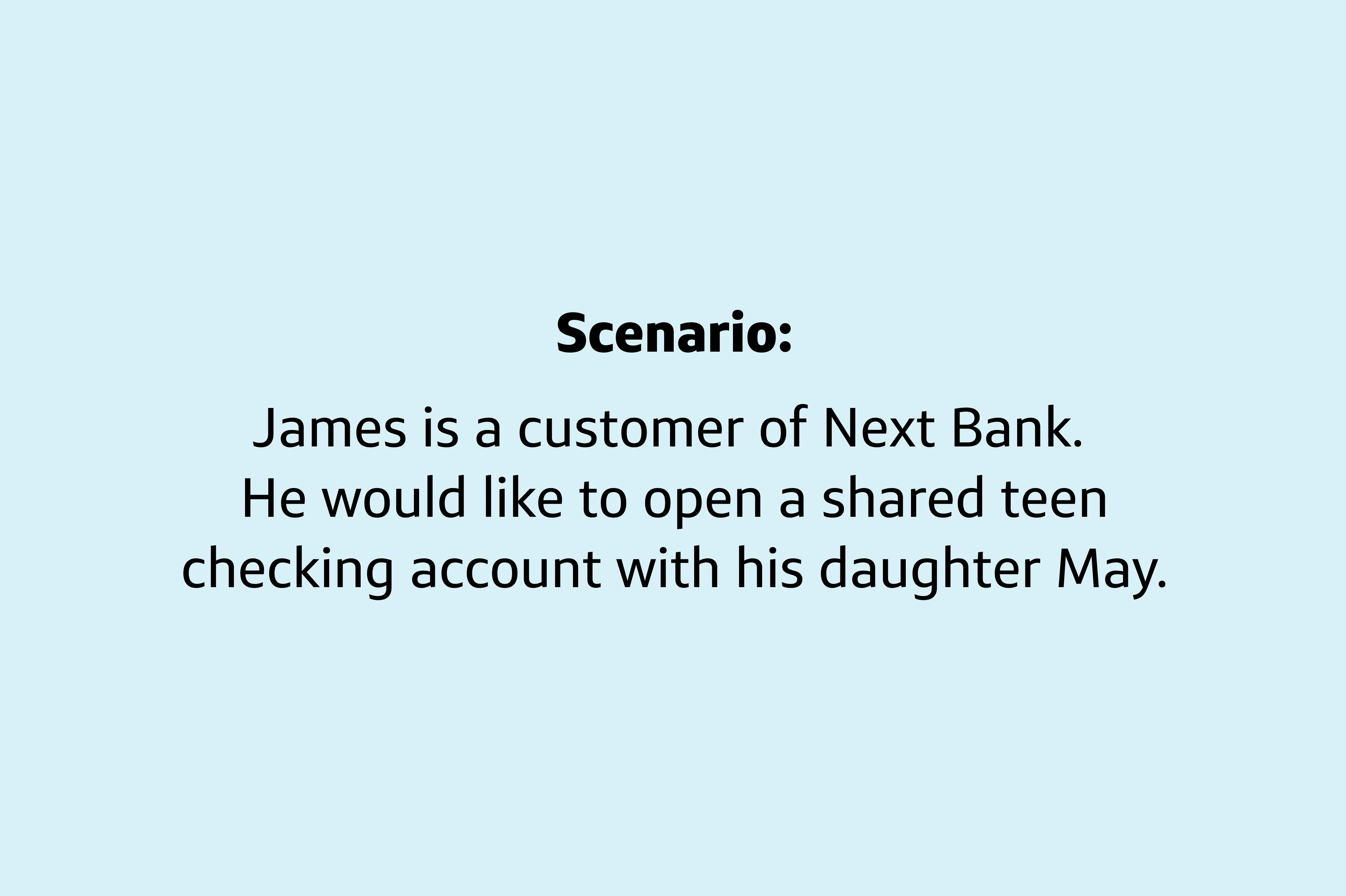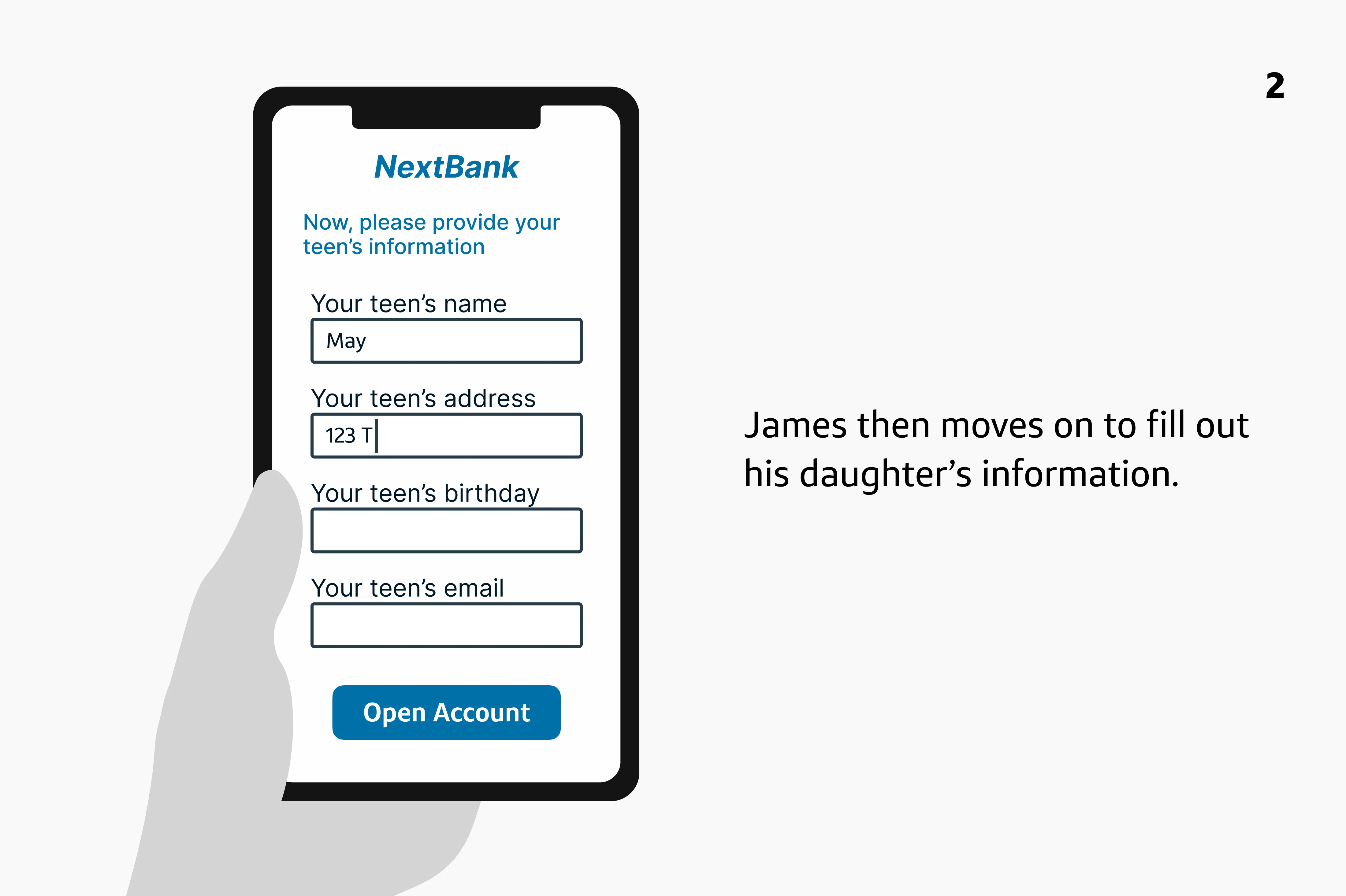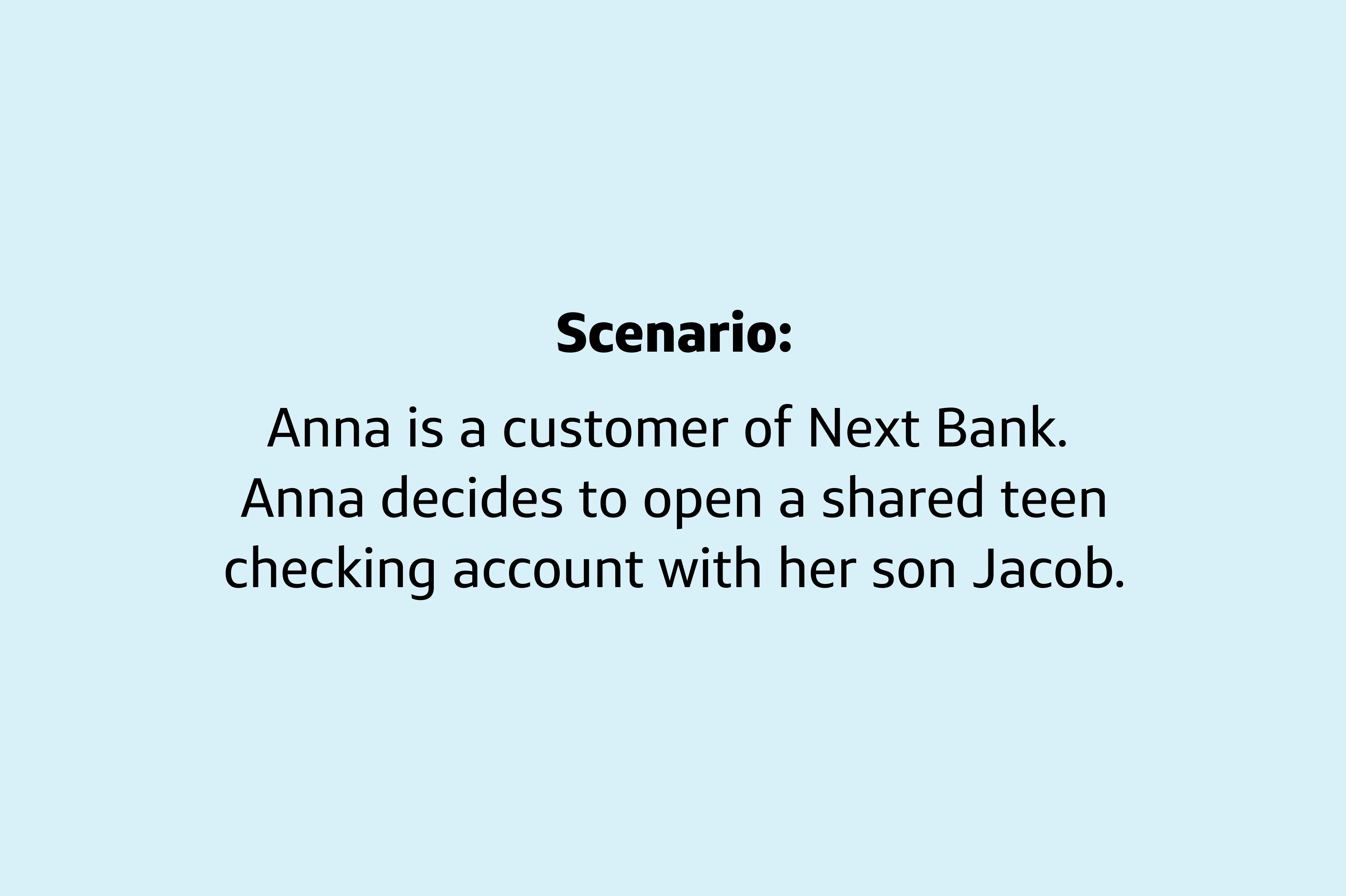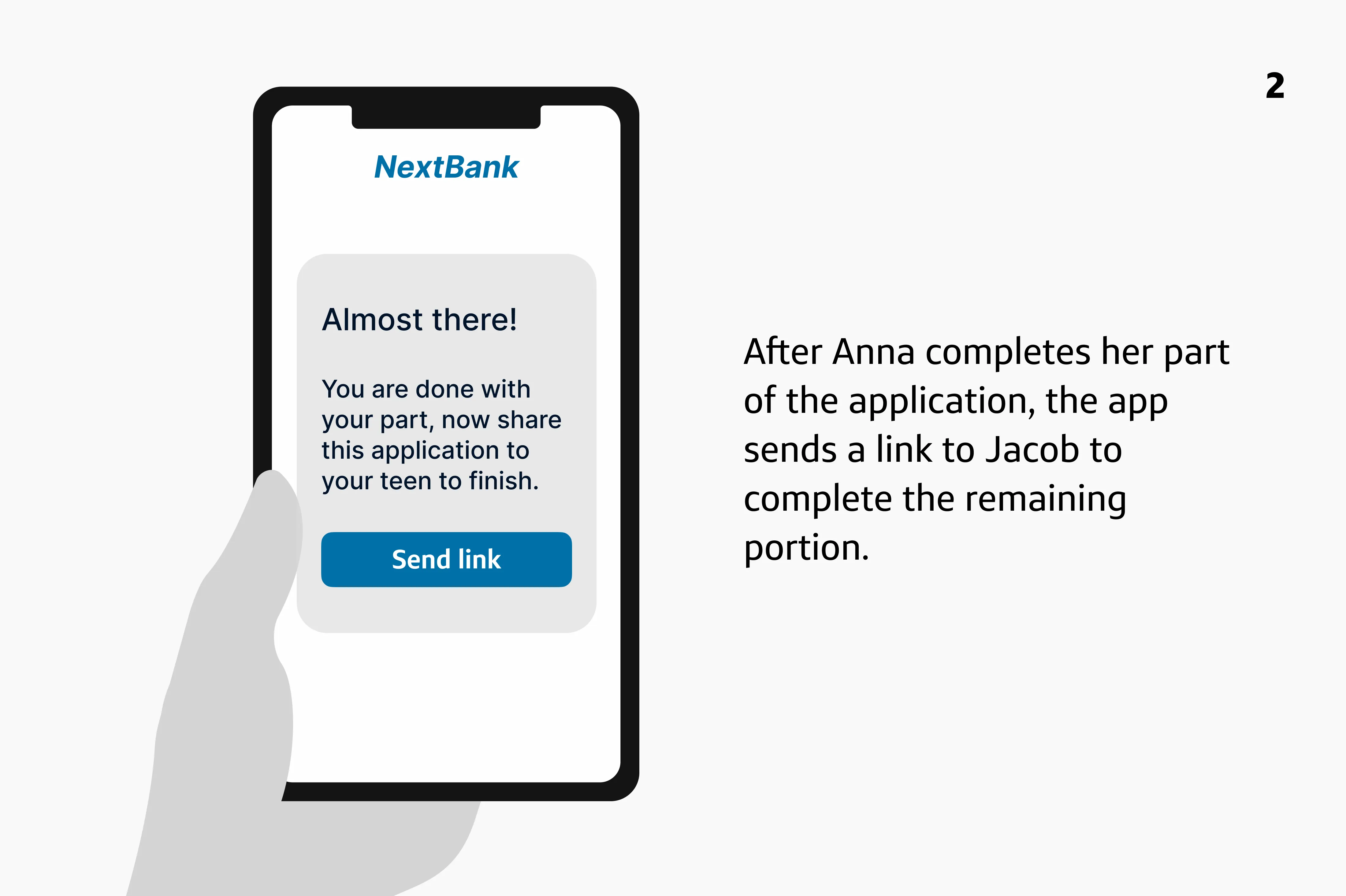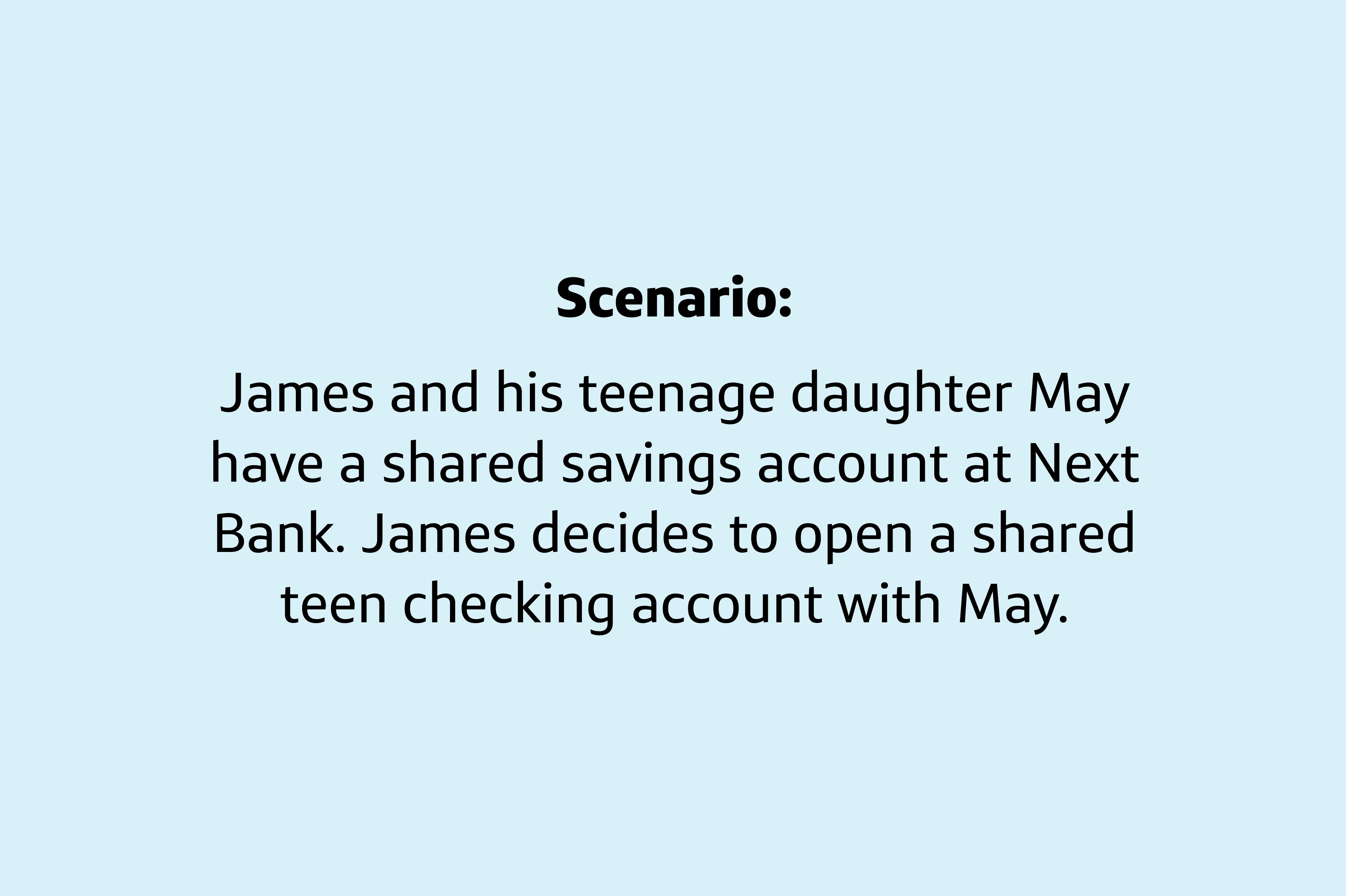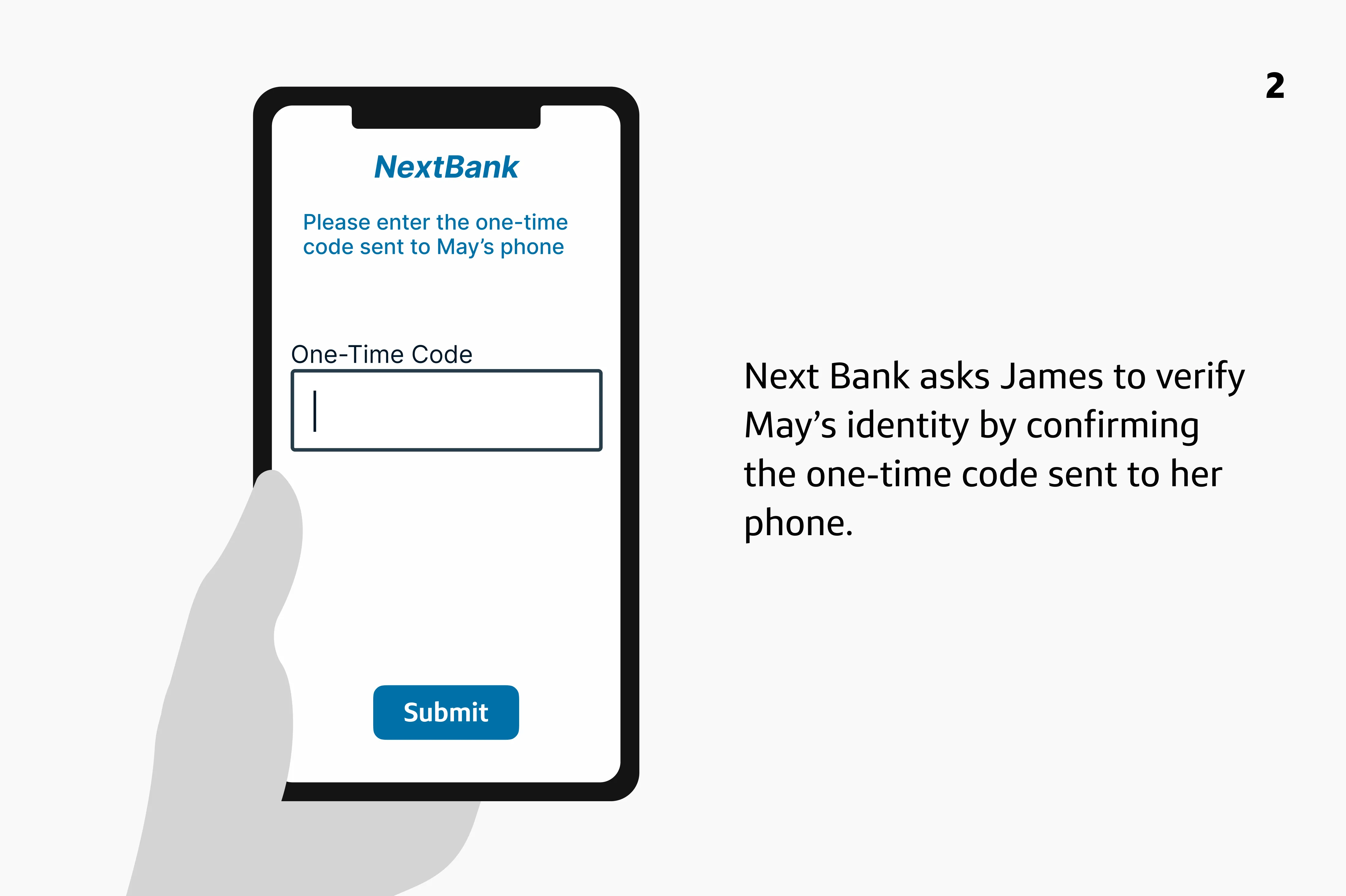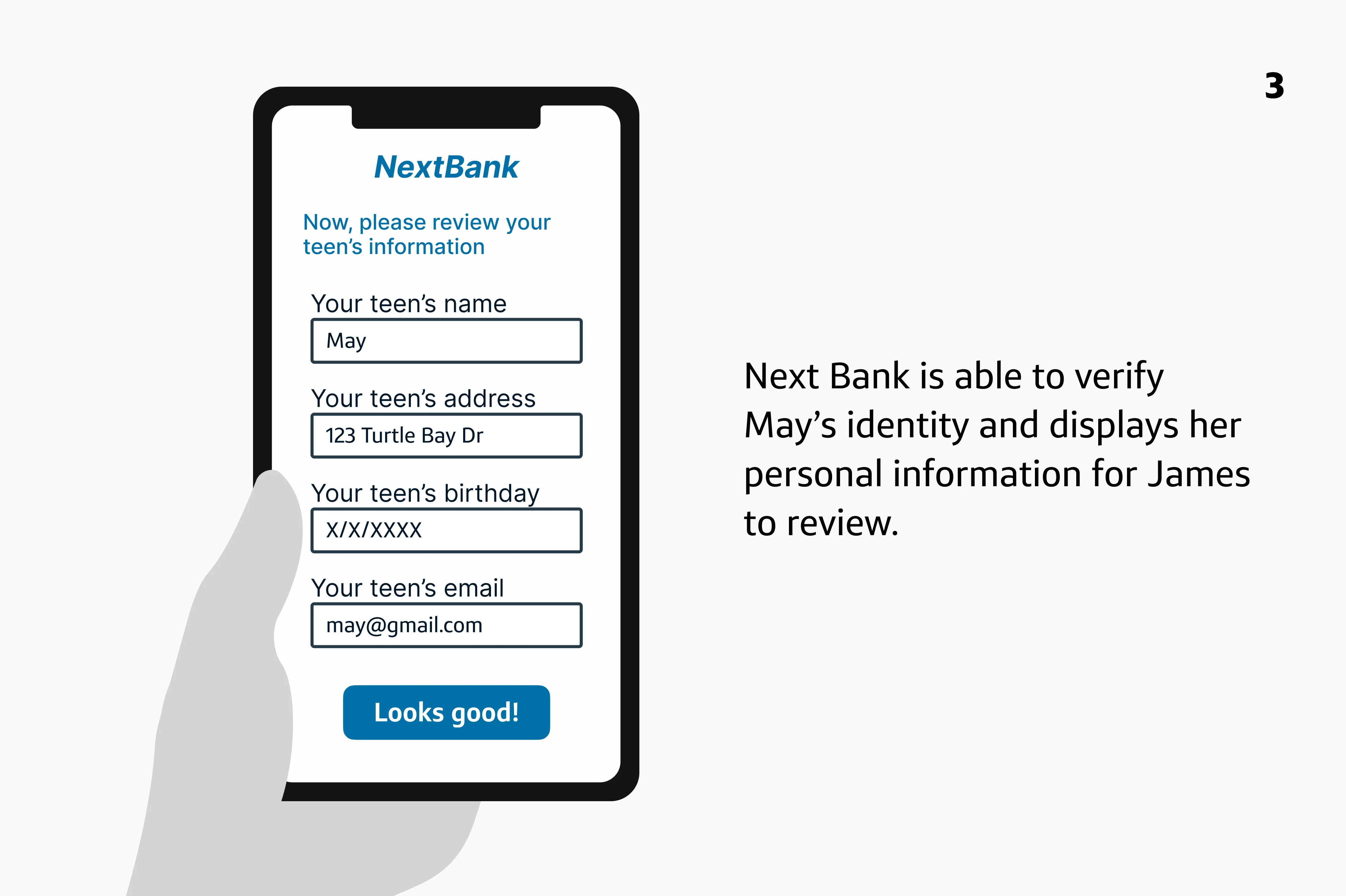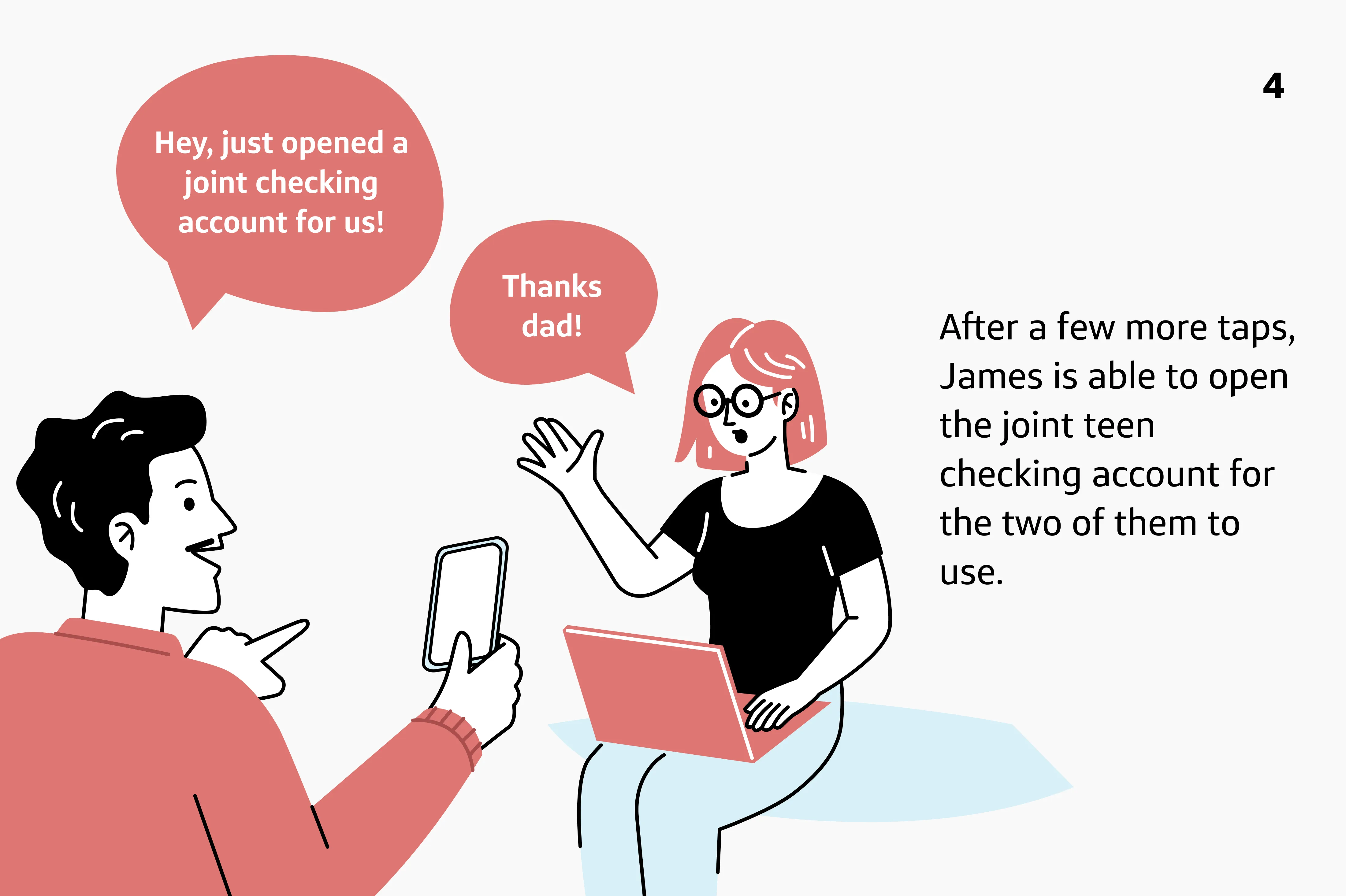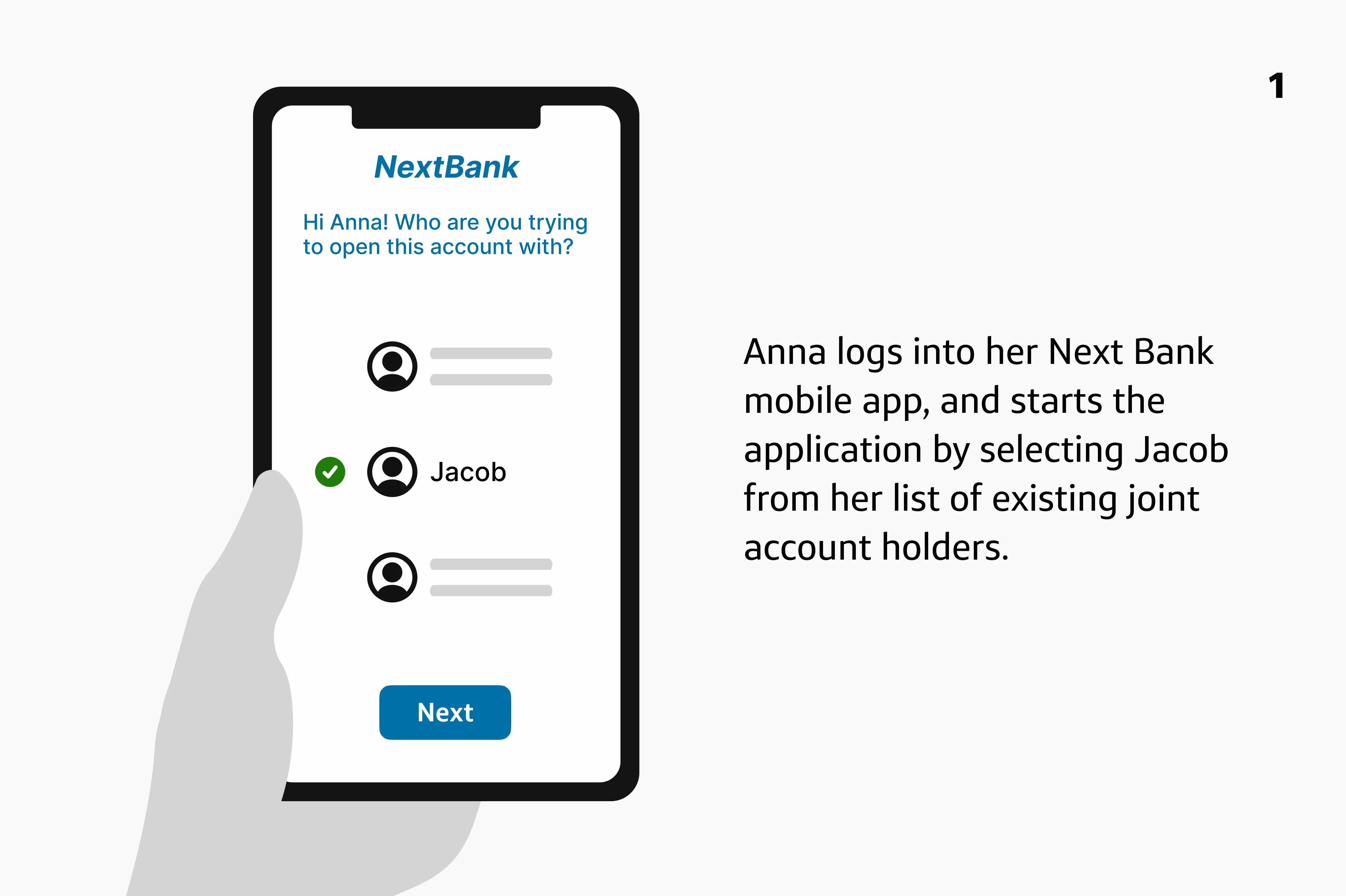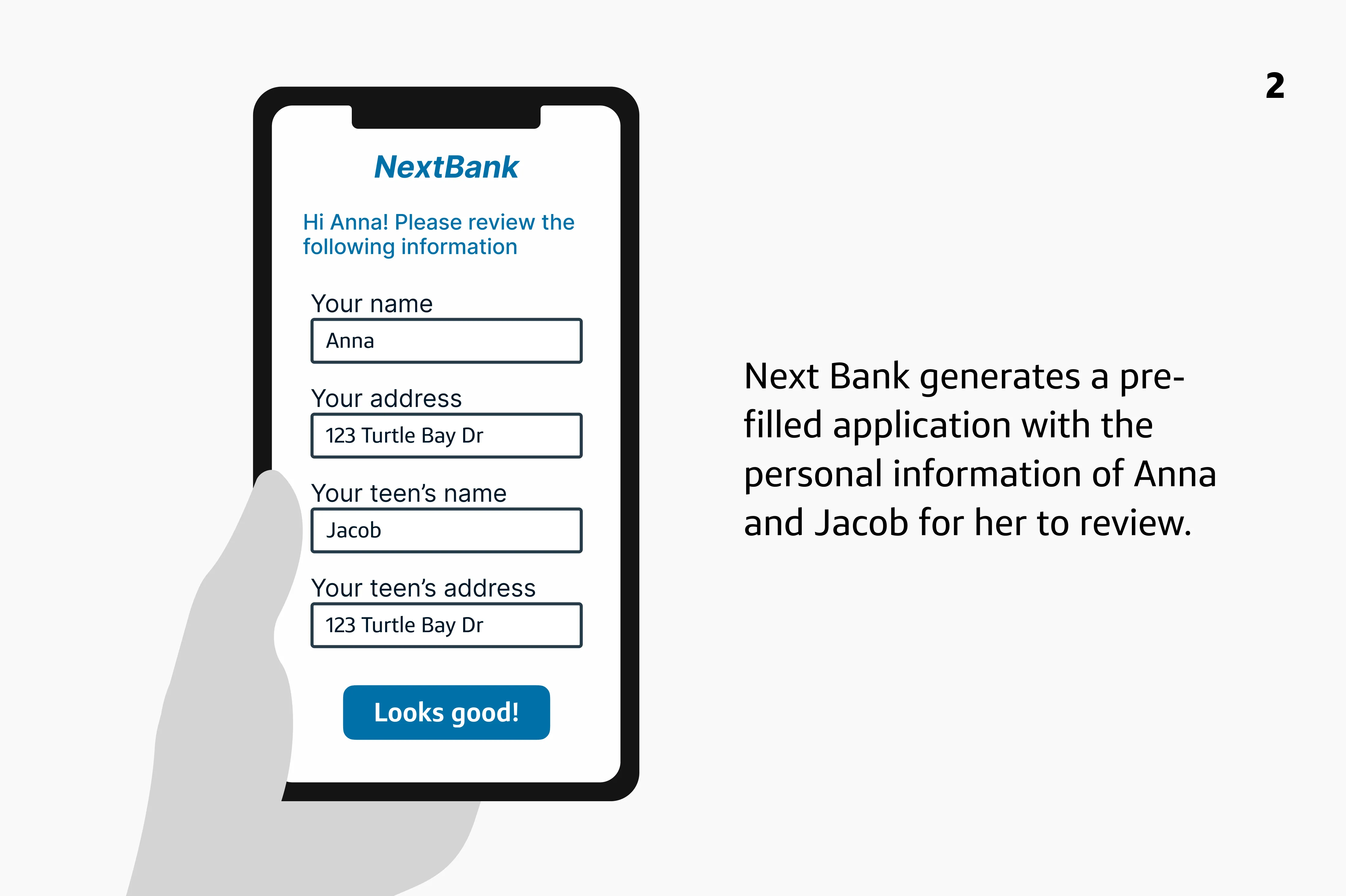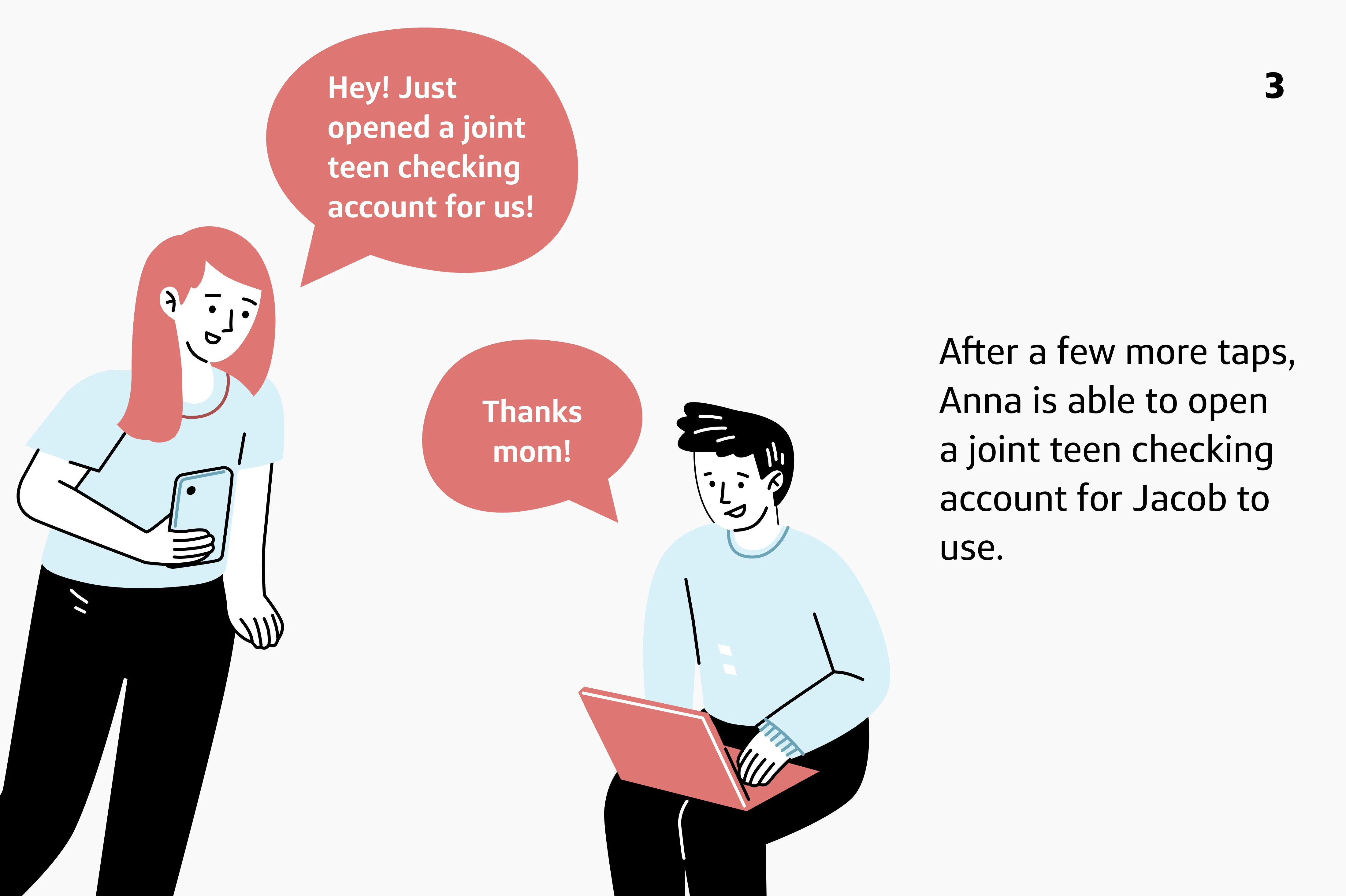Multi-User Account Opening
Modernizing the way users apply for joint bank accounts
- [ Company ]
- Capital One
- [ Role ]
- Design Lead
Research Lead - [ Partners ]
- 1x Product Owner
1x Designer/Researcher - [ Timeframe ]
- 2024 — Present
Overview
I led the design and research effort to overhaul Capital One's outdated joint bank account opening process, navigating rigid technical constraints to create a more intuitive and optimized application.
Fig 1.1 —
Preview
Fig 1.2 —
Executive Summary
Opening a multi-user bank account through the 'Legacy' application was a tedious and error-prone experience, leading to low conversion rates.
Migrating this experience to the newer 'Flashcard' application platform required foundational research into how to best design an joint account opening experience.
Prioritizing speed-to-market, we delivered a 'Flashcard' MVP optimized for multi-user accounts exclusively through enhancements on the frontend.
Context
Multi-user bank accounts (such as those for parents and their kids) are still opened through Capital One's legacy application.
The Two Applications
When users apply for a Capital One bank account online, they may be served either the 'Legacy' application or the newer 'Flashcard' application (depending on the account being opened). As Capital One gradually migrates all accounts to use the Flashcard experience, both application platforms remain live during the transition.
Fig 2.1 —
Legacy vs. Flashcard
The Legacy Application
Fig 2.2 —
Conversion Rate Comparison
Multi-User Accounts
Capital One offers two products that are inherently multi-user: MONEY Teen Checking and Kids Savings Account. These accounts are intended to be shared between a parent and a child and must still be opened through the Legacy application. Due to the increased technical complexity of handling more than one user at the same time, these two products were prioritized last for the migration to Flashcard.
Fig 2.3 —
Scaling Flashcard to all Products
Problem
Not only was opening a multi-user account through the Legacy application buggy and unoptimized, the experience was also costly for Capital One to maintain.
Lose-lose experience
Issues with the Legacy application created a poor experience for all parties—frustrating for users and costly for the business.
Fig 3.1 —
Core Issues with the Legacy Application
Cognitively Overwhelming
Clunky and Unoptimized
Resource Intensive
As long as the Legacy application remains live, Capital One needs to maintain two application platforms. This doubles operational costs, as any updates, such as regulatory changes, must be applied to both Legacy and Flashcard. Additionally, we see much higher support call volume for users opening an account on the Legacy application, further driving up costs.
Nightmare Scenario
The Legacy application breaks down when both applicants are existing Capital One customers, due to structural bugs in how it handles authenticating more than one user at the same time. This is a common scenario for parents and their children. For example, a parent might open a savings account for their newborn without issues, but years later, trying to open a checking account for their now-older child becomes a technical nightmare.
Fig 3.2 —
User Journey (Parent & Child are Existing Customers)
Research
To inform how to best design a multi-user experience for Flashcard, we conducted a competitive analysis and concept testing.
Competitive Analysis
We analyzed a wide range of competitors, including banks, fintechs, and out-of-industry players, to understand the best practices for handling parent-child joint accounts.
Fig 4.1 —
Competitive Analysis Details
We analyzed over 30 competitors that offer a parent-child joint account.
The analysis revealed two main variables to consider for our design: application driver (parent-led vs. teen-led) and application type (1-stage vs. 2-stage).
Further investigation was needed to determine which approach was best for our purposes.
We first compiled a list of traditional banks, fintechs companies, and out-of-industry players that offer a parent-child joint account.
For each competitor, we then gathered screenshots and evaluated their joint account opening experience.
Competitor List
We identified two main variables across experiences:
A consistent pattern emerged within the competitor categories:
There appeared to be a clear link between application driver and marketing strategy:
Companies with parent-led applications targeted parents in their marketing, while those with teen-led applications focused their marketing on teens.
Concept Testing
The competitive analysis revealed different approaches for us to consider in designing a parent-child joint application ( parent- vs. teen-led, 1- vs. 2-stage). As Capital One primarily markets our joint minor accounts to parents, we were aligned on a parent-led application. To determine whether a 1-stage or 2-stage application would better meet our users' needs and goals, we conducted low-fidelity concept testing.
Fig 4.2 —
Concept Test Details
We created 4 low-fidelity concepts covering different approaches to opening a parent-child joint account.
We recruited 32 parents to provide feedback on the concepts.
We validated that a standard 1-stage application strikes the best balance between user needs and business requirements for our MVP.
-
Participants (32)
-
16 parents of younger children (8-13)
-
16 parents of older children (14-19)
-
-
Concepts (4)
-
Parent is an existing customer + Child is a prospect
-
Parent is an existing customer + Child is an existing customer
-
Each participant was assigned a single concept to explore. They were then asked a series of questions designed to evaluate their thoughts and reactions to the concept.
Questions List
Parents of younger children overwhelmingly preferred a 1-stage application.
Parents appreciated the ability to complete the application by themselves, recognizing that their youngerchildren may not be ready yet for such responsibility.
Parents of older teens liked the idea of a 2-stage application, but had concerns.
Although sharing responsibility with their teen seemed like a good teaching opportunity, parents were worried that their teen would either forget to complete their part of the application or make mistakes if they did.
Existing customers were satisfied with both the standard and expedited experiences.
The pre-filling of information was consistently identified as the most valuable feature for existing customers, regardless of the standard or expedited process.
Design
To prioritize speed to market, the Flashcard MVP is a “reskin” of Legacy, with more significant development scheduled as a fast-follow.
Defining MVP
Migrating all products to Flashcard (and subsequently decommissioning the Legacy application) was the top priority for the business, constraining the scope of the MVP. To meet this critical objective quickly, we came up with a short-term approach that strategically reuses the Legacy back-end while deferring the more complex development of Flashcard's back-end to later phases.
Fig 5.1 —
MVP Details
Deliver the minimum viable experience that allows for the quickest path to decommissioning the Legacy application.
Break up the application into bite-size steps, enabling increased conversion rates.
Create a parent-led, 1-stage application experience.
Address as many usability issues as we can while minimizing back-end work.
MVP Design
Retaining the Legacy back-end for the MVP meant inheriting all of its technical issues and bugs (see: Nightmare Scenario). We accepted this trade-off as the cost for speed-to-market. Despite being unable to solve for every known user problem, we delivered a parent-led, 1-stage application that made incremental but significant improvements over Legacy.
Fig 5.2 —
MVP Architecture
Fig 5.3 —
MVP Highlights
As we were limited in our ability to make back-end changes, we found ways to improve the user experience solely through front-end enhancements:
Suggested Defaults
Shared contact info
Usability Testing
While Flashcard proved to be a successful experience for our single-user products, its efficacy for multi-user products was less certain. To validate our designs early, we benchmarked the Flashcard MVP against the Legacy application, generating a usability score for each. The MVP achieved a slightly higher usability score than Legacy, giving us confidence to proceed with development.
Fig 5.4 —
Usability Benchmarking Details
We built high-fidelity, production-quality prototypes for both the Flashcard MVP and the Legacy application.
We recruited 30 parents to evaluate the account opening process using these prototypes.
Using the 'SUM' formula, we calculated a usability score for each experience: with the Flashcard MVP (87%) slightly outperforming Legacy (85%).
-
Participants (30)
-
30 parents of at least 1 dependent (8-19)
-
-
Prototypes (2)
Each participant went through their assigned prototype and responded to a series of questions designed to evaluate the usability of the experience.
Afterwards, we calculated a Single Usability Metric (SUM) score for each prototype based on the participant's responses.
Questions List
Both applications demonstrated high usability scores, with the Flashcard MVP achieving a slightly better score (87% vs. 85%).
Participants generally found both experiences easy and effective for their needs. However, the subtle improvements to user experience in the Flashcard MVP gave it an edge.
Counterintuitively, many participants reported that the Legacy application felt faster to them, despite the Flashcard application being measurably faster.
When asked to rate perceived time on task, participants rated the Legacy experience as feeling faster (average 3.67) than Flashcard (average 3.0). However, when we look at the objective data, Flashcard was actually 10% faster: with an average time on task of 402 seconds compared to Legacy's 447 seconds.
Participants in the Legacy application group explicitly expressed desire for enhancements present in the Flashcard MVP.
6 out of the 15 participants in Legacy group independently expressed a desire for an easy way to copy over the parent's contact details over to the child's side of the application. This organic user need for a feature already in the Flashcard MVP strongly validates our design choices.
Impact
While development of the MVP is still in progress, at scale, we expect to see a noticeable boost in conversion rate.
Post MVP
After the full MVP release, we'll revisit development on Flashcard's back-end to support native multi-user functionality.
Post MVP Design
Transitioning the experience to the newer Flashcard back-end will not only allow us to tackle long standing technical issues but, more importantly, enable significant user experience improvements that were technically impossible with the Legacy back-end.
Fig 7.1 —
Highlights
Flashcard's more modern and flexible back-end enables us to pursue more impactful optimizations:
Auto-detect Existing Customers
Alternative authentication methods
Select from existing account holders
Recognizing that parents often open additional accounts for the same child over time, we've streamlined the process for users to open another account with someone they already share an account with. Instead of typing all their info again, users can just select from their existing joint account holders and have their information pre-filled into the application.
